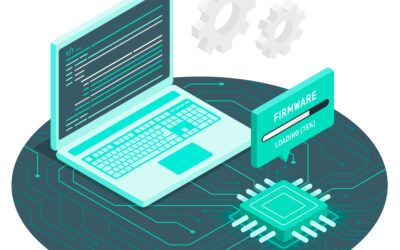Table of Content
Understanding IoT Device Performance in Real Time with IoT Data Analytics
Businesses generate vast amounts of real-time data that needs to be analyzed—so it can be understood and effectively used in making important business decisions.
IoT Use Cases and IoT Data
IoT use cases are developed when business operations or product managers design new products or improve existing ones by connecting them to the internet, systems, or other devices to deliver valuable solutions. Devices exponentially generate IoT data that requires analysis and intelligence. IoT data is usually unstructured and needs to be combined with third-party data to be meaningful; for example, data from a thermostat is analyzed together with humidity and outside temperatures to make sense within its context. IoT data comes in from devices in raw messages in different forms and frequencies and must be collected, cleansed, analyzed, and processed.
Learn more here about IoT: What is IoT?
IoT data problems are complex and require expertise. Make sure to avoid data siloes, and run data analytics across data pipelines. IoT data architectures are designed with the flexibility to support data from many locations, device types, and formats. IoT data analytics deploy data from multiple data pipelines, such as the network edge, company systems, other cloud services, and endpoint devices. The growth in IoT data makes it challenging to create and operate a data center on premises or in the cloud. Therefore, you need a team with IoT and cloud computing expertise. IoT analytics platforms from Google Cloud Platform (GCP) and AWS simplify deployment and give you speed and scalability with pay-as-you-go services. In addition, running your IoT data analytics from these platforms allows managing data governance, privacy, and security without investing in hardware or infrastructure.
Platforms can ingest data with built-in “ingest APIs” and a “channel” to feed the pipeline. Channels store data in JSON format and allow filtering data of interest by attributes such as device type, humidity, or temperature. Platforms also optimize data storage and built-in query configurations or customized complex queries. IoT data pipelines source data from channels to perform analysis on different sources and schemas and transform the data fed to a data store. Queries scan data from data stores and create data sets.
Building Machine Learning (ML) models for IoT use cases generates enriched data that is used to perform IoT analytics. At Krasamo, we build code and customize workflow analysis for customers to run and operationalize IoT data analytics. IoT data is deployed using application containerization technologies and automation. IoT data analytics helps to make accurate analytical predictions and gives competitive advantages to the enterprise.
IoT Data Analytics Process
How to run and operationalize IoT data analytics:
- Collect data (data ingestion) from any source and store data
- Process data (clean and filter data, configure pipelines, customize/design workflows)
- Data transformations (define logic)
- Enrich data with relevant sources of data
- Connect pipeline with channel (specify the source of messages)
- Store data (data stores specify the message/data destination)
- Data analysis (data sets triggers are scheduled to allow IoT data queries—ad hoc queries—and time series analysis)
- Develop IoT use cases using Machine Learning (ML) models and prediction services (package code into executable container images)
- Analytics, visualization, and dashboards (integrate and execute analysis with other tools)
- Automate analysis tailored to the IoT use case
- Build Mobile Applications
Let Krasamo’s Expert Teams Support Your Company
- Building an IoT analytics architecture model
- Designing data flows (creating logic for processing IoT data)
- Building custom code to take advantage of IoT data analytics
- Partnering in IoT app development
- Creating Machine Learning (ML) use cases
- Creating container data sets and automating custom analysis
- Creating containerized data science tools
- Discovering patterns and trends
Companies that develop and apply machine learning algorithms to device data save money, make better decisions, and become more efficient, thereby raising the competitive standard in their business segment or industry. Thus, the learning curve plays a crucial role in IoT. Get started now with data analytics in your enterprise. Contact Krasamo’s IoT and data science team today for more information. Krasamo data science and IoT teams have the skills required to develop and implement IoT data analytics. We develop IoT apps and data analytics strategies that consider the data architecture to run real-time workloads for our customers.













Great post! I’m loving the breakdown of IoT use cases and how they produce unstructured data that needs analysis. It’s so true that combining this with third-party data is key to making sense of it all – we’ve seen this firsthand in our internet of things consulting work, where a little creativity can go a long way in unlocking insights! Congrats on writing such an engaging post!
I appreciate the author’s insight into the complexities of IoT data analysis. As a computer engineer familiar with IoT architectures, I would like to add that effective data management also requires expertise in data integration and processing from multiple sources, including edge devices and cloud services. For organizations seeking internet of things consulting, leveraging platforms such as AWS or GCP can streamline deployment and ensure scalability. These cloud-based solutions provide flexibility and cost savings, making them an attractive option for managing IoT data growth.
I’d say the post is a solid overview of IoT data analytics, but it’s nothing new for those who’ve worked on internet of things consulting projects. The flowcharts could be more detailed, though.
I’ve come across similar concepts in my research on IoT consulting. While the author’s points are well-articulated, I’d have liked to see more concrete examples of real-time data analysis in action.
Yeah, I’ve seen this stuff before. As a business analyst with experience in IoT consulting, it’s all just standard procedure at this point. Time to move on to something new 😐